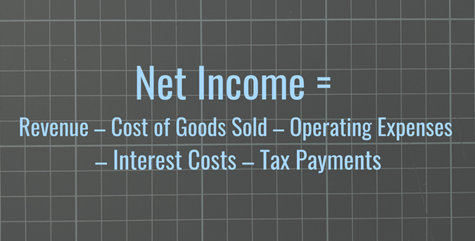Chapter 2: Net Income Overview
Chapter 2: Net Income Overview
Overview

 Net income, also known as net profit or the bottom line, is a key financial metric that represents the amount of money a company has earned after subtracting all expenses from its total revenue during a specific period of time. It's a measure of a company's profitability and is often used by investors, analysts, and managers to evaluate the financial performance of a business.
Net income, also known as net profit or the bottom line, is a key financial metric that represents the amount of money a company has earned after subtracting all expenses from its total revenue during a specific period of time. It's a measure of a company's profitability and is often used by investors, analysts, and managers to evaluate the financial performance of a business.
Here's how net income is calculated:
Net Income = Total Revenue - Total Expenses
Total Revenue includes all the money generated by the company from its primary business activities, such as sales of goods or services, interest income, and any other sources of revenue.
Total Expenses encompass all costs incurred by the company in order to generate revenue and operate the business. This includes:
- Cost of Goods Sold (COGS): The direct costs associated with producing goods or services sold by the company.
- Operating Expenses: These include expenses such as salaries, rent, utilities, marketing, research and development, and other day-to-day operating costs.
- Interest Expenses: The costs of borrowing money, such as interest on loans or bonds.
- Taxes: Income taxes owed by the company to the government.
 After subtracting all expenses from total revenue, if the result is positive, it indicates that the company has made a profit. Conversely, if the result is negative, it means the company has incurred a net loss.
After subtracting all expenses from total revenue, if the result is positive, it indicates that the company has made a profit. Conversely, if the result is negative, it means the company has incurred a net loss.
Net income is an important metric for several reasons:
Financial Health: It provides insight into the financial health and profitability of a company. Consistently positive net income indicates that a company is generating profits, while persistent losses may suggest financial difficulties.
Investor Confidence: Investors often use net income as a measure of a company's performance and potential for future growth. Higher net income can attract investors and drive up the company's stock price.
Decision Making: Managers use net income to assess the effectiveness of their business strategies and make decisions regarding resource allocation, pricing strategies, and investments in new initiatives.
Comparative Analysis: Net income can be compared across different periods or against competitors to evaluate relative performance and identify trends.
Overall, net income is a fundamental measure of a company's financial performance and is crucial for understanding its profitability and sustainability in the long term.
In this Unit, you will be covering the following Sections:
What is Gross Income
Unit Sections:
- Section 2-1: Federal Income Tax
- Section 2-2: State Income Tax
- Section 2-3: Graduated State Income Tax
- Section 2-4: Social Security and Medicare Taxes
- Section 2-5: Group Health Insurance
- Section 2-6: Statement of Earnings
